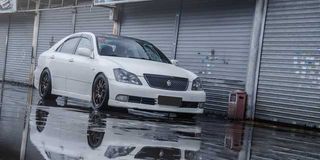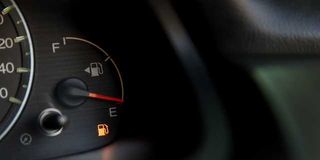Premium
Is it time to change the gearbox in my Nissan Serena?

I have a 2014 HFC26 Nissan Serena that has a shift delay. I have had the car for a year, but more recently when changing from parking (P) to drive (D) or drive (D) to reverse (R) there is a 4-second delay.
Gavin,
I have a 2014 HFC26 Nissan Serena that has a shift delay. I have had the car for a year, but more recently when changing from parking (P) to drive (D) or drive (D) to reverse (R) there is a 4-second delay. After that, the car picks up and accelerates well but has the occasional jerk effect when I move my foot from the accelerator. I have had the system computer diagnosed, changed the fluid and serviced the gearbox, but the problem persists. Do I need to change the gearbox? Are there good Nissan mechanics you can recommend? Thank You.
JPM
First, don’t rev the engine in an effort to speed up the engagement of the transmission. That could do damage. The problem is likely to be most noticeable on the first start of the day, and that is also when the risk of damage is greatest.
Second, the delay problem is not uncommon, often because of poor maintenance or exceptionally high mileage (was your Serena a taxi?). The root problem is usually inadequate transmission fluid flow/pressure. The reasons for that can range from lack of fluid to very old fluid to the wrong fluid to leaking seals to clogged filters in the box to detritus in the torque converter to a defective pump.
Specialist service should know that and be able to find and fix the fault. They should also have the necessary equipment to make an otherwise quite complicated process quick and easy – especially for draining and flushing old fluid and any debris in the torque converter. Ask your mechanic what he “serviced” on your transmission.
There is much more to properly servicing an automatic transmission than simply topping up or changing the fluid, and it is more important to find an expert on automatic gearboxes than an expert on your particular make of car. I cannot recommend a specific agent, but as automatic gearboxes are now so much more numerous in Kenya, experts will exist and be findable.
As a test guide, if they do not have a special machine for flushing torque converters be cautious, if they do have one, be encouraged. And do they know the difference between iMT, AMT, CVT, TC and DCG automatic boxes?
Meanwhile, wait patiently for your transmission to engage, but do not wait to have the delay problem well repaired. So far you probably do not need to buy a new gearbox, but that could soon change if you do not act promptly.
For the consideration of all owners of automatics, the recommended fluid change interval is commonly 50,000 km, and regular expert maintenance more than doubles a transmission’s life expectancy compared with service neglect.
Old cars need never die, but their ageing comes at a price
Dear Gavin,
Good work on your motoring column. I have a concern with car valuation. I drive a 2006 Toyota Crown, with low mileage, and great condition. I live close to the office, so I don’t drive too far daily. I have noted the steady decrease in the car’s value for insurance, the average reduction is Sh100, 000 per year, yet the car is fantastically well-kept, accident-free and regularly serviced. It has not needed any major work in a garage. I aver it is in better shape than some cars manufactured 10 years later. I love it and have no plans to sell it. My question is: are there some parts ageing and dying without any sign? Do cars have a lifespan?
Regards, EMT
Never mind what insurance companies think your car is worth…to them. That only affects (and does not guarantee) what they will pay if the vehicle is stolen or destroyed, and you can probably adjust that in advance on the grounds of its exceptionally good condition, by negotiating a higher “agreed value” for a higher premium.
It has no effect on the car’s real market value (what a buyer is willing to pay), and it is entirely separate from what continued ownership is worth to you personally, for the pleasure you get from using it, the pride you have in looking after it, and the quality/utility of motoring experience it gives you in return.

The ultimate “Lifespan” of the Toyota Crown is mostly up to you. Even the best-kept cars suffer some wear with use, and piece by piece, some parts will finally wear out. But these can be refurbished or replaced.
The insurance value is broadly based on the statistical market price average for the make, model and year, from which general “depreciation” rates can also be derived.
The ultimate “Lifespan” of your beloved Crown is mostly up to you. Even the best-kept cars suffer some wear with use, and piece by piece, some parts will finally wear out. But these can be refurbished or replaced. Indeed, even the most neglected and dilapidated old wreck can be restored to full function and all the way up to good-as-new condition. At a price.
As owners of Classic, Vintage and even Veteran cars will be pleased to tell you, vehicles do not have an absolute time/age limit. There are many cars running around Kenya today – ranging from decrepit to almost mint condition – that are at least 50 years old and some around 100 years old.
So “Lifespan” is a tricky concept that depends less on time/age and almost entirely on use, care and maintenance cost. None of the super oldies was designed or expected to last that long, but almost any vehicle can theoretically be nurtured to do so. Concours d’Elegance competitions, in Kenya and worldwide, are the exemplar.
So “Lifespan” is too vague a term as an industry standard, and manufacturers base their engineering on what they call “economic design life” – a combination of years and mileage a car is built to last for under average conditions and use before requiring so much repair and replacement to remain roadworthy that maintaining it becomes uneconomic. In pure money terms, it makes more sense to replace it than to fix it. That economic equation differs between manufacturers, between owners, and may also be distorted by policymakers for economic reasons on a national scale.
Countries with the highest roadworthiness standards, especially if they are affluent markets and motor manufacture is a pillar of their national economy, and to ensure their national fleets are renewed in line with the latest fuel efficiency, exhaust purity and crash safety standards, have policies that give tax incentives to scrapping cars at around 15 years, and/or impose increasingly swingeing licence-cost penalties after the age of seven!
They have national fleets with an average age of five to seven years.
The average age of Kenya’s cars is more than double that, and many of the cars on our roads are 30 years old or more (my two are 19 and 25). Their value to me is much higher than the modest market price that I insure them for.
Help! My Toyota Vitz is burning up oil at an alarming rate…
I have a Toyota Vitz 1.3L 2009 model with a 2SZ fe engine. The engine oil level goes down by 300ml every 1,000kms. There is no leakage in the engine or under the car. It is mainly driven in town daily around 20 to 30kms only. The inside of the exhaust is black but does not emit smoke. Please help me diagnose the problem.
Thanking you for your time. Regards,
Zahir.
If there are no visible external leaks, the oil is probably being burned inside the engine, most likely because your piston oil rings are worn or cracked. That would not be unusual with a small engine that is 13 years old and might be well on the way to 200,000 km (five times around the world). Have the compression tested and stand by to replace the piston rings.

If there are no visible external leaks on the Toyota Vitz, the oil is probably being burned inside the engine, most likely because your piston oil rings are worn or cracked.
Your oil loss rate translates to a mixture of about 200 parts petrol to one part of oil (200:1). Many two-stroke engines operate on mixtures at least four times as rich in oil as that, so your exhaust will not necessarily be smoky in normal use.
Try the check again. Watch the tailpipe while someone else presses the accelerator pedal to the floorboards, just for a second or two, to momentarily hit top revs. Do that two or three times in quick succession. Still no smoke?
The only other possibility is that the oil is leaking through a crack inside the engine block into the coolant channels in its walls. In that case, there would be oil visible in your radiator coolant, and the remedy for that could be more complex and expensive. Your rate of loss does not portend imminent engine failure but is high enough to warrant a check soon and probable remedial action.
Is ‘running on empty’ more dangerous?
Your piece on the fuel gauge was enlightening. Maybe you could also have mentioned how far a vehicle will on average travel after the low-fuel warning light comes on and any dangers of driving with an almost empty tank. Clement M.
As I mentioned, fuel gauges are not very accurate and the fuel can slosh about in the tank, so the low-fuel warning light level can also be approximate and erratic.
The level set to trigger the warning light varies between different makes and models but is usually at about four litres. Assume not more than that and possibly less. The main danger is that you will run out of fuel before reaching the next filling station, or that the next station will be out of stock.

Fuel gauges are not very accurate and the fuel can slosh about in the tank, so the low-fuel warning light level can also be approximate and erratic.
The principle is that you should refill as soon as possible, and if you are in a particularly remote place, drive as economically as possible. That means avoiding harsh acceleration or high speed and cruising smoothly at around 60kph in the highest possible gear without labouring the engine.
A possible but unlikely danger is that detritus that may have accumulated in the bottom of your tank will be more stirred up, so the engine might be drawing on dirtier fuel. Always consider refuelling when the gauge reaches the quarter mark…or sooner.
The explosion of a car fuel tank is very rare indeed, even in accidents. When it does happen, clearly the more fuel there is the bigger the inferno can be, however, in any circumstances, it is not the liquid that first ignites, it is the vapour.
And in a nearly empty tank, there can be a lot more of that at the most ignitable ratio of air and fuel. For storage, either absolutely empty, dry and aired or absolutely full is the recommended protocol.
***
Do you have a motoring question? Email [email protected]





